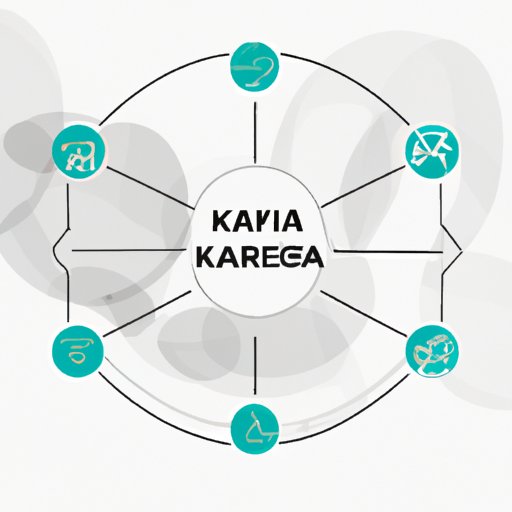Introduction
Kafka is a distributed streaming platform developed by Apache Software Foundation. It is an open-source technology that enables organizations to process data streams in real time. It is a powerful tool for data processing and stream processing applications.
In this article, we will explore what Kafka is, how it works, and how it can be used in your business. We will also discuss the advantages of integrating Kafka with other technologies and look at some real-world case studies of companies that are using Kafka to power their data processing applications.
What is Kafka Technology?
Kafka is a distributed streaming platform that stores and processes large volumes of data. It is built on top of Apache ZooKeeper, a distributed coordination service. Kafka is designed to provide a highly scalable, fault-tolerant, low-latency platform for handling real-time data feeds.
At its core, Kafka is a publish-subscribe messaging system that allows producers to send data to consumers in a distributed manner. It is designed to handle high throughputs of data and make sure that data is delivered reliably and quickly. Kafka can be used for a variety of different tasks including data streaming, data integration, message queuing, and real-time analytics.

Overview of How it Works
Kafka works by creating topics, which are essentially channels through which messages can be sent. Producers (or publishers) write data to topics and consumers (or subscribers) read data from topics. Kafka also provides the ability to store data in topics for a certain amount of time, making it easier to process data in batches.
Kafka is designed to be highly available, meaning that if one node fails, the data is still accessible on another node. This allows for a highly reliable and fault-tolerant system. Kafka is also designed to be horizontally scalable, meaning that more nodes can be added to the cluster as needed.
Guide to Using Kafka in Your Business
Kafka is a powerful tool for data processing and stream processing applications. Here are some tips for using Kafka in your business:
Benefits of Kafka for Data Processing
Kafka is a great tool for data processing because it is fast, reliable, and highly available. It can be used to process data in real time, allowing for faster decision making. Kafka is also highly scalable, meaning that it can easily handle large amounts of data. It is also capable of storing data for long periods of time, making it ideal for batch processing.
Understanding Kafka Architecture
Kafka is built on a cluster of nodes, each of which is responsible for storing and processing data. It is important to understand the architecture of Kafka in order to properly use it for data processing. Kafka has several components such as brokers, topics, partitions, producers, and consumers that need to be understood in order to properly configure and use the system.
Securing Your Data with Kafka Security
Kafka provides several security features to ensure that data remains secure. This includes authentication, encryption, authorization, and access control. It is important to understand these features in order to properly secure your data.

Integrating Kafka with Other Technologies
Kafka can be integrated with other technologies to create powerful data processing and stream processing applications. Here are some tips for integrating Kafka with other technologies:
Exploring Options for Connecting Kafka with Other Platforms
There are several options for connecting Kafka with other platforms. You can use open source projects such as Apache Flume or Apache Storm to connect Kafka with Hadoop, Cassandra, and other big data technologies. You can also use commercial solutions such as Confluent Platform to connect Kafka with other enterprise systems.
Examining Potential Issues and Challenges
When integrating Kafka with other technologies, it is important to consider potential issues and challenges. For example, different technologies may have different data formats, which can lead to compatibility issues. Additionally, different technologies may require different levels of security, so it is important to understand the security requirements of each technology in order to ensure that data remains secure.
Case Studies on Real-World Kafka Implementations
Real-world case studies can provide valuable insights into the benefits of using Kafka for data processing and stream processing applications. Here are some examples of companies that are using Kafka:
Examples of Companies that are Using Kafka
Netflix, Uber, LinkedIn, and Airbnb are just a few of the companies that are using Kafka for data processing and stream processing applications. These companies are leveraging Kafka’s scalability, reliability, and availability to power their applications.
Analyzing the Benefits They Have Experienced
These companies have experienced several benefits from using Kafka. For example, Netflix has seen improved performance and reliability in their streaming platform, while Uber has seen improved customer experience and lower costs due to their use of Kafka. LinkedIn has seen improved scalability, while Airbnb has seen improved customer engagement.
Conclusion
Kafka is a powerful tool for data processing and stream processing applications. It is designed to be highly scalable, reliable, and available. It can be used to process data in real time and store data for long periods of time. Kafka can also be integrated with other technologies to create powerful data processing applications.
Real-world case studies show that Kafka can provide significant benefits to businesses. Companies such as Netflix, Uber, LinkedIn, and Airbnb have all seen improved performance, scalability, and customer experience due to their use of Kafka.
In summary, Kafka is a powerful tool for data processing and stream processing applications. It is highly scalable, reliable, and available. It can be used to process data in real time and integrate with other technologies. Companies that leverage Kafka have seen improved performance, scalability, and customer experience.
(Note: Is this article not meeting your expectations? Do you have knowledge or insights to share? Unlock new opportunities and expand your reach by joining our authors team. Click Registration to join us and share your expertise with our readers.)
